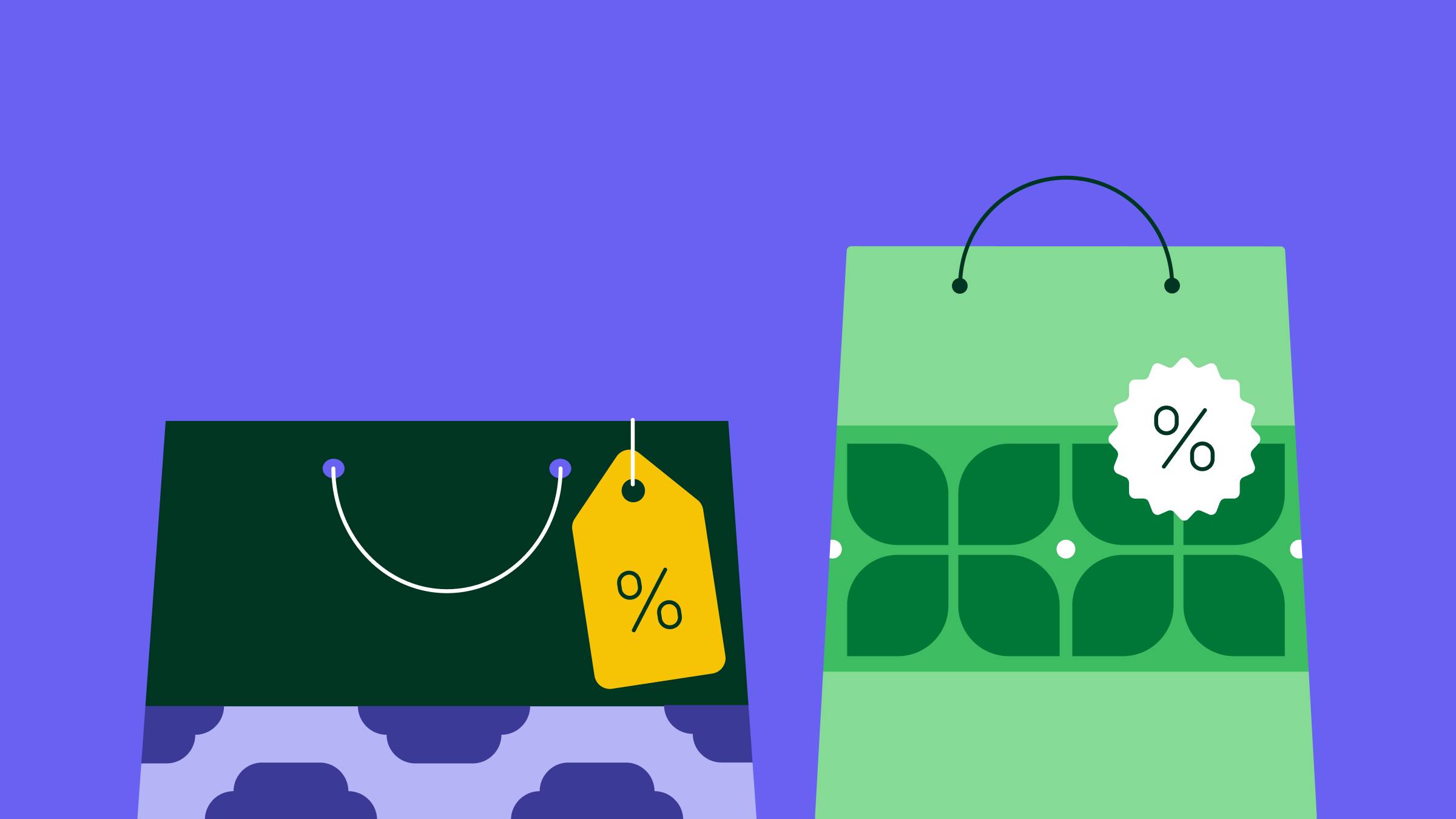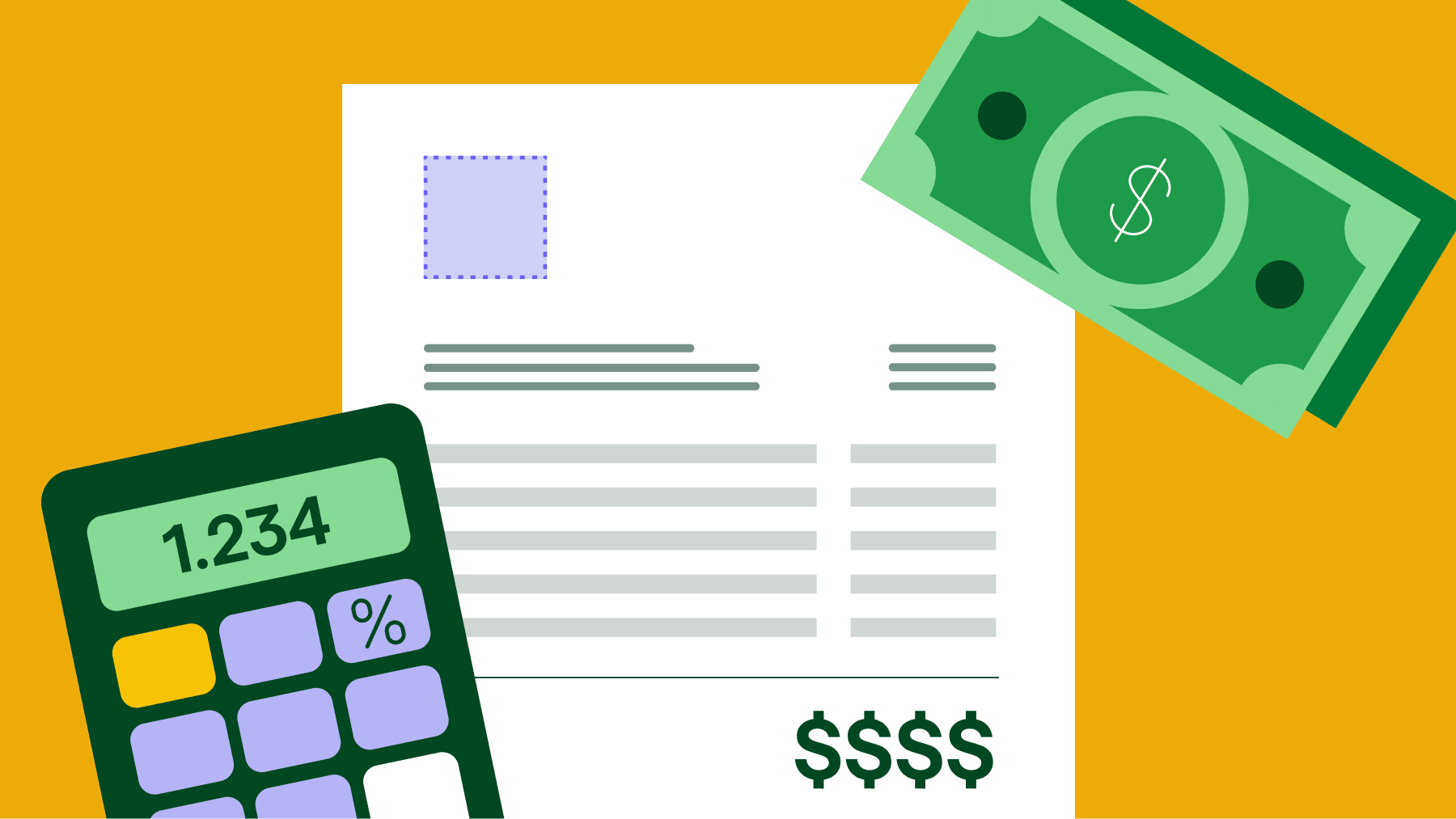Even when a business steadily brings in sales and secures deals, marketers need to stimulate demand and boost sales in the short term.
Having a toolbox of sales promotion techniques can help. Sales promotions, or promos, can positively affect your brand awareness, customer satisfaction and revenue.
In this article, we’ll share 12 sales promotion ideas and tips on where and how to run them. We’ll also help you decide which activities best suit your business needs.
What is a sales promotion?
A sales promotion is a marketing strategy in which a business uses short-term promotional campaigns to spark interest and create demand for a product, service or offer.
A well-designed sales promotion motivates buying behavior or triggers a short-term increase in purchases to reach a benchmark. Although the main goal is an uptick in sales, building a strategic sales promotion with your marketing team has plenty of other benefits.
The benefits of sales promotions
Sales promotions are powerful tools for generating attention and demand for your business.
Although the main reason to run a sales promotion is to increase demand for a particular offer, promotions can help you achieve multiple outcomes depending on your end goals. The benefits include:
Generate new leads
Sales promotions allow you to attract new leads in the short term. Reel in potential customers with a deal, and they’ll be more willing to pull out their credit cards later.
For example, you can offer a free trial of a software-as-a-service (SaaS) tool so potential customers can determine whether your product is the solution they need.
Another helpful strategy is selling your product at a lower price so users can share it with others who would benefit from the discount. Either way, sales promotions are a great way to attract qualified leads for your sales team.
Note: Attracting new leads is one piece of a long-term strategy. You must continue nurturing them, moving them along the sales pipeline and turning them into loyal customers.
Introduce a new product, service or feature
Sales promotions help you grab attention and increase demand when introducing a new product, service or feature that doesn’t yet have social proof within your market.
For example, pairing the announcement of your new SaaS feature with a “limited time only” discount can turn longtime leads into paying customers. Alternatively, if you’re introducing a new product, you could share an introductory price that expires after a certain number of purchases.
Sell out extra inventory
Sales promotions are an efficient way to clear out extra inventory at the end of a sales period. If a particular product takes up too much space or goes out of production, put it on sale instead of throwing it out.
For example, if a newer product model comes in and retailers need to make space, they can run a “buy one, get one free” (BOGO) sales promotion to clear out old inventory. The sale makes room for newer products, while older functional models go to a new home.
Gain valuable insights
Sales promotions generate valuable insights into what your customers desire, how they make purchase decisions and what kinds of promotions they value the most. This information will help your sales and marketing teams understand the people they want to reach while strengthening present and future campaigns.
When designing your sales promotion, research your customers’ interests and what your competitors offer. This information can help you attract new clients, improve customer service and create compelling offers that resonate with your target audience.
Encourage existing customers to buy more
A great sales promotion idea could focus specifically on repeat customers. Encouraging repeat business is easier and more cost-effective than attracting new sales prospects.
Providing existing customers with exclusive incentives increases customer loyalty, generates repeat purchases and draws high-quality referrals from long-term or repeat customers. This practice is good for any sales pipeline because repeat clients move through the funnel quickly since they already know what to expect.
Sell during the off-season or slow periods
If your business is seasonal or has slower periods, well-timed sales promotions can boost purchases and galvanize interest at a time when sales are often slow or stagnant.
For example, a landscaping company may offer discounts on annual services to generate interest and revenue during slower winter months.
Seal More Deals With Your Free Sales Communication Handbook
12 different types of sales promotions
Regardless of your business or industry, there are always sales promotion examples and techniques that align with your needs, including:
1. Competitions and giveaways
Customer competitions can be about getting the most engagement on a social media post your brand is tagged in, or a social media challenge that enters them in a giveaway. Create buzz around your business while rewarding customers for being avid supporters and promoters of your brand.
2. Flash sale or limited-time price reduction
A flash sale is a sales promotion offering a discount, promotion or rebate that’s only valid for a short time, ranging from a few hours to a few days. Flash sales create a sense of urgency, which can nudge consumers to purchase.
For example, Twilio recently ran this flash sale for its upcoming SIGNAL conference:

Even though the buying window is short, marketers can build interest by sharing when the flash sale will occur.
3. Bundling of products or services
If you have a product set that might create more value as bundled offerings, consider selling them as a package at a discounted rate to increase sales.
Bundles are especially popular for consumer offerings (e.g., the latest installment in a film franchise, as in the example below).

Bundling can also work well for B2B offerings, such as combining a new generation of software features with existing offerings.
This strategy incentivizes customers struggling to choose between several of your products or services to purchase both (or many) at a discounted price.
4. Free trial or demo
Free trials are a great way for a lead to try your product or service without risk or commitment. Retailers can offer free samples at the point of purchase, and B2B or B2C services can provide a free trial for leads and potential customers to test the product.
Consider pairing the demo with a limited-time discount to support conversion.
5. Limited-time free shipping or transfer between platforms or services
Since 2023, cart abandonment rates have held steady at 70%, according to Statista and Baymard Institute.

Sales promotions offering free shipping and returns eliminate one of the obstacles causing people to abandon their carts.
Another final purchase hurdle might be your customer’s resistance to dealing with the challenge or costs of switching providers. You can mitigate these worries and encourage action by waiving transfer fees for a limited time or offering free setup services.
6. Limited-time freebies
If your pricing strategy isn’t flexible, you can still generate a sense of urgency by creating a limited-time offer for a free product added to an order.
For example, you could offer an existing product or service alongside a free bonus feature or add-on. This strategy adds perceived value without hurting your bottom line or constraining your resources.
7. First purchase coupon
If someone connects to your business through a free trial, it might take them time to become a paying customer.
To speed up the process, offer a discount on their first purchase. Some brands even offer these deals in their welcome email to thank new customers or leads for joining the community.
For best results, limit the offer to a couple of days. Even if they don’t use the coupon, they may browse your products or services and learn more about your business.
8. Buy one, get one free
“Buy one, get one free” or “Buy two and get the third free” are commonly used sales promotion tactics. These marketing campaigns are helpful when you want or need to sell several products simultaneously.
This type of promotion can also build brand awareness since your customer may share the extra items with a friend or family member.
9. Coupon or voucher code
Coupons are versatile because you can deliver them in many ways, such as via your website, social media or print materials like on your receipts or product packaging.
For example, online learning platform Code Academy offered this code for 50% off the price of its Pro subscription:

Promotions like this are a great way to thank current customers or incentivize first-time visitors to return.
10. Tripwire (upsell)
Tripwire refers to offering an entry-level product or service to a potential customer. This strategy helps salespeople get more leads into your ecosystem or sales CRM and begin nurturing them through the buyer’s journey.
Once you build trust with this sales promotion, you can show customers why upgrading to a higher-priced offer is in their best interest.
11. Recurring sale
If it suits your business, consider a regular yearly or biannual sale. For example, a company might promote an annual Founders’ Day sale or back-to-school bargain days.
A recurring sale can build anticipation so people are ready and excited to spend when it finally comes around.
12. Portion of the purchase goes to a charitable cause
Running a sales promotion that dedicates a portion of your purchase to charity is a great way to spark business.
Your customers will feel good about their purchase, and you can enhance your brand image by associating it with a worthy cause and social responsibility. It’s also easy to build customer loyalty with leads who support the charity themselves.
How to prepare your sales force for a sales promotion
When running a sales promotion, it’s vital to have a solid grasp on your customer journey and experience. Your sales team spends most of its time moving customers along the buying journey, so team members are the perfect people to answer these questions.
As you prepare a sales promotion, ask your sales team to provide customer insights that will help with messaging and positioning. For example, your sales team may have valuable observations on:
The most common barrier to closing a deal | Frequent complaints include budget issues, time constraints, seemingly better offers from a competitor or the feeling that the product is too complicated. |
The most common reasons a deal successfully closes | For example, they tried the product and loved it, got referred by a friend, trusted the sales rep throughout the process or thought competitor pricing was too high. |
The sales enablement resources that tipped the scales | If a specific piece of sales collateral helped push prospects along the sales pipeline, what was it and why was it so well-received? |
Your sales team can add significant value by uncovering what motivates the target audience’s buying behavior, what barriers they face when considering your product or service and what kinds of resources resonate with them (and why).
For example, if users feel a product is too complicated and a sales enablement webinar helps ease this strain, offering a free sales demo is the perfect fit.
Keep your sales team in the loop so they know their role in the sales promotion. Provide clear direction about their part of the process.
For example, do you want a rep to be the first point of contact when an inbound lead comes in, or do you want somebody from the marketing team to talk with them first? The more specific you can be about the workflow, the smoother your sales promotion will run.
Finally, provide your sales team with all the information they need, including:
How to decide who’s eligible for the sales promotion | For example, is there a minimum business size requirement? |
What exactly they’re eligible for | For example, how long will the sales demo last, and what happens if people want a follow-up demo with a decision-maker? |
Any legal information the sales team should know | This aspect is vital for sales promotions that involve an exchange of money, such as requiring the customer to accept terms and conditions before offering them a coupon or cash back. |
Even if your sales team is not the first point of contact, they need this information to follow the guidelines and ensure a smooth sales promotion.
Where to run your sales promotion
You can run a sales promotion to attract new leads and business online and offline through channels like the following.
Email marketing
Email marketing should play a significant role in your sales promotions, especially if you’re targeting existing customers. Unlike social media promotion, there’s no guesswork regarding algorithms, ads or other factors that can impact your reach.
According to eMarketer, nearly 70% of consumers worldwide say email is their preferred communication channel with brands.

In addition, tools like segmentation can accelerate the buyer journey by creating personalized messaging that reflects your customer’s interests, needs and past purchase decisions.
Facebook and Instagram marketing
Facebook and Instagram marketing are powerful digital sales promotion tools because they allow you to reach people worldwide while being specific about who you target.
These social media platforms also allow you to create many types of ads within your specified marketing budget.
Even if people don’t purchase, you can still track and measure metrics such as new leads, impressions and referral traffic – all vital data for your sales team to leverage in their lead generation efforts.
SMS messaging
Like email marketing, SMS messaging is a direct communication channel rather than an indirect channel, such as a social media post or website banner.
SMS messaging is best for instant updates, flash sales and time-sensitive deals you want your customers to see quickly.
Events, trade shows and conferences
Networking events are great opportunities to connect with qualified prospects.
Note: Consult this list of the top events for your sales calendar this year.
Attending a virtual or in-person conference, leading a training or hosting a workshop allows you to generate leads and offer a sales promotion as thanks for their attendance.
How to make your sales promotion effective
Here are some best practices to ensure your sales promotion helps you achieve your goals.
Set well-defined sales promotion goals
Sales promotions can do more than increase sales and revenue. While planning your sales promotion, consider what additional goals you have. Here are some potential objectives:
Attract new leads or broaden your customer base
Improve customer retention
Separate hot leads from cold leads
Nurture prospects through the sales pipeline
Increase purchase frequency
Generate business during slower periods, seasons or times of day
Increase the average purchase amount
Hit team-wide goals in a specific timeframe
Ensure your goals are SMART: specific, measurable, achievable, relevant and time-bound.

SMART goals clarify your focus and make it easier to track progress.
Select your target audience
Before you create a sales promotion and outline goals, learn more about your existing customers. Sending a customer survey or offering an incentive to gather new information allows you to understand customer needs, preferences, buying behavior and interests.
Once you know the best fit for your offer, you can create a sales promotion targeted to those most likely to purchase or become a sales-qualified lead (SQL).
Offer practical value
Craft your sales promotion carefully to add tangible value for your clients. Running sales promotions that don’t benefit your customers will damage your reputation.
As you design your sales promotion, prioritize a positive customer experience and ensure it aligns with your business’s culture and values.
For example, if you craft a sales promotion that states your product can specifically solve X problem, only for customers to buy it and realize it doesn’t solve that problem, the promo could backfire.
Review, test and improve
After you run a sales promotion, measure results before starting another one. Schedule your analysis during a time that works well for your sales cycle.
Once you compare your campaign to the goals you set earlier, decide what to tweak, change and improve for your next run.
Align your promotion with common shopping holidays
Aligning with common shopping holidays is a great way to catch your customers’ interest while they’re already looking for gifts, special offers and limited-time deals.
Common holidays to put on your marketing calendar include Black Friday, Cyber Monday, Valentine’s Day and summer holidays in your area.
In addition, any holiday meaningful for a specific group, like Mother’s Day, can be a great way to target particular segments of your audience.
Engage and connect with your audience beyond the holiday so they don’t see you as a gimmicky company.
Create a sense of scarcity or urgency
Sales promotions work because your audience knows they won’t last forever. Highlight when the special offer will no longer be available to create a fear of missing out (FOMO) that hastens purchasing decisions.
Do this by setting a deadline or offering a limited number of spots, such as “this offer is only valid for the first X purchases”.
Start a loyalty program to promote exclusive offers or discounts
Providing loyal customers with an exclusive offer discount incentivizes them to continue participating in the program. It also makes them feel appreciated for their continued commitment to your brand.
Begin a referral program
A referral program helps reward people who send business your way. It’s a great way to take advantage of the word-of-mouth conversations already happening.
Sales referral programs also allow you to increase customer acquisitions, boost customer retention and build up email lists.
Final thoughts
No matter your end goal, incentive method or promotion channel, sales promotions are a proven way to catch your audience’s attention and enhance the sales process.
Compelling sales strategies, such as scarcity, urgency, exclusivity and proper timing, allow you to increase revenue and achieve business goals.







